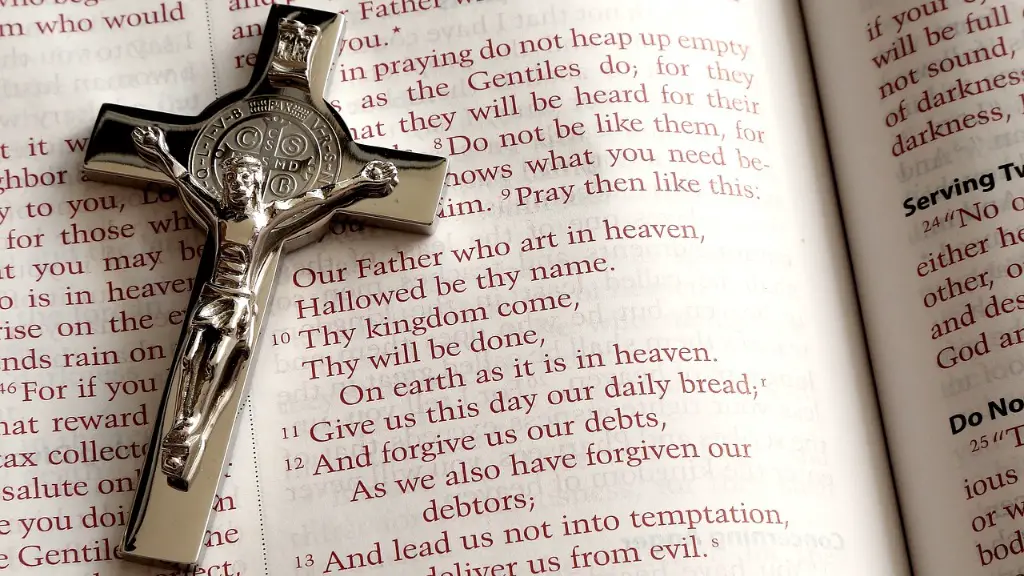History of the Symbol
Rams have had a long history as symbols, from ancient Mesopotamian cultures to modern times, as evidenced by their numerous appearances in literature, film, and even television. In ancient times, rams were associated with fertility and abundance, as they were a reliable source of nourishment, with their thick wool providing protection from the cold. They were also seen as symbols of strength, due to their horns, which could be used as weapons in combat, and were believed to ward off evil and danger. In the bible, rams are mentioned numerous times, and they often symbolize courage, strength, and faith.
Rams in the Bible
In the bible, the ram is a symbol of strength, courage, and faith. It is mentioned several times throughout the texts, and is usually associated with God’s promises and blessings. One of the most famous examples of a ram’s role in the bible can be found in the story of Abraham’s sacrifice. Abraham was commanded by God to sacrifice his son, Isaac, as a demonstration of his faith. At the last moment, an angel of the Lord intervened, and Abraham was allowed to sacrifice a ram instead, thus symbolizing God’s understanding and mercy. The ram also represented Abraham’s willingness to obey God’s command, despite how difficult it was.
Rams in Judaism and Christianity
In both Judaism and Christianity, the ram is viewed as a symbol of strength, courage, and faith. According to Jewish tradition, the ram is a symbol of redemption, since it was the animal chosen for Abraham’s sacrifice instead of his own son. Christians see the ram as a symbol of Jesus’s ultimate sacrifice on the cross, with its horns representing the nails used to crucify him. In both religious traditions, the ram symbolizes faithfulness and obedience, as well as the power of sacrificing oneself for a higher purpose.
Symbolism of Sacrificial Offerings
The symbolism of sacrificial offerings runs deep in the bible, with rams playing an important role in this particular aspect of faith. In Leviticus, the book of the bible devoted to worship, numerous offerings of rams are described, and they were used as a sign of faith, as well as a sign of thanks and repentance. For worshippers, the act of offering an animal, such as a ram, was seen as a way of symbolically sacrificing themselves to the Lord, and it was seen as an act of humility and submission to God’s will.
Other Symbolic Significance
In addition to its association with sacrificial offerings and faithfulness, the ram also holds other symbolic significances. In the bible, rams often signify holiness and spiritual strength, as well as abundance and fertility. In the book of Exodus, for example, Moses is instructed to build a sanctuary for the Lord, and to use “rams’ skins,” which are seen as symbols of holiness and purity. As the story of Abraham’s sacrifice demonstrates, rams also signify the power of repentance, since Abraham was willing to sacrifice a ram instead of his son.
Rams and Contemporary Culture
The symbolism of rams has become deeply ingrained in contemporary culture. Rams are often used as a symbol of strength, courage, and resilience, and they appear extensively in literature, films, television shows, and even logos. For example, the lion is the national animal of Scotland, and the ram is often used as a symbol of that country, due to its strength and courage, as well as its status as a source of nourishment and sustenance.
Rams and Nature
For centuries, rams have been an important part of nature. In certain parts of the world, they can be found in their natural habitat, but for farmers and livestock owners, rams are a very important source of food and wool. As a result, they are often seen as symbols of nourishment, fertility, and abundance. In some cultures, the ram is also a symbol of strength, courage, and protection, as its horns can be used as a form of warfare or defense.
Rams and Mythology
Rams can be found in numerous mythologies, from ancient Greek and Roman beliefs to Hindu, Egyptian, and Mesopotamian traditions. In many cultures, the ram holds a significant role, often representing strength and courage, as well as fertility and abundance. In Hinduism, for example, the Ramayana tells the story of Lord Ram and his wife, Sita, who together symbolize strength, courage, and fidelity. In Greek mythology, the ram is often associated with the gods Apollo and Artemis, who were both associated with physical and spiritual strength.
Rams and Astrology
Rams appear in numerous branches of astrology, with the sign of Aries being the first in the zodiac. People born under this sign are believed to be fiercely independent, courageous, and determined. Aries is also associated with leadership and initiative, and is often seen as a sign of strength and resilience. This is reflected in the symbol of the Ram, which has come to represent these qualities in contemporary culture.


